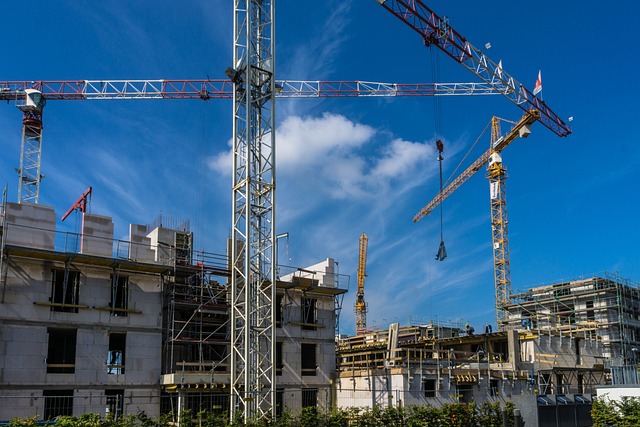High-precision utility locating (HPUL) using advanced technologies like GPR and electromagnetic location is crucial for safe and efficient construction, minimizing damage to underground utilities. By accurately mapping critical infrastructure before excavation, HPUL reduces costly delays, service interruptions, and repairs, prioritizing safety and project management in urban areas with complex utility networks. Neglecting this process leads to financial losses and safety risks, so contractors should prioritize HPUL, maintain clear communication, and ensure all parties are trained in best practices for utility safety. A collaborative culture emphasizing open communication among stakeholders is essential to prevent utility damage and ensure timely, budget-friendly project completion.
“Avoiding costly utility damage and delays during construction projects is not just a matter of luck but strategic expertise. This comprehensive guide delves into the crucial aspect of high-precision utility locating, offering professional insights for construction teams. By understanding the fundamentals and best practices of this method, you can significantly reduce risks and ensure efficient project execution. Learn from common mistakes and discover how fostering a safety culture among all stakeholders can revolutionize your construction site, making it a harmonious blend of progress and safety.”
Understanding High-Precision Utility Locating: The Foundation of Damage Prevention
Understanding High-Precision Utility Locating: The Foundation of Damage Prevention
High-precision utility locating is a critical process that forms the bedrock of preventing damage to underground utilities. It involves advanced technologies and techniques, such as ground-penetrating radar (GPR) and electromagnetic location, to accurately map out the positions of pipes, cables, and other infrastructure beneath the surface. This precision ensures that construction or excavation projects can proceed with utmost care, minimizing the risk of striking vital utilities.
By employing high-precision utility locating, professionals gain real-time data on underground assets, allowing them to make informed decisions. This method significantly reduces the chances of costly delays caused by accidental damage, service interruptions, and repairs. It is an indispensable step in today’s world, where efficient project management and safety are paramount, especially in urban areas with complex utility networks.
Best Practices for Efficient and Accurate Locating
Before digging or starting any construction project, efficient and accurate utility locating is a best practice that can save time, money, and prevent costly damage to essential services. High-precision utility locating tools, such as Ground Penetrating Radar (GPR) and electromagnetic location devices, offer precise real-time data on the position of underground utilities. These technologies enable professionals to map out underground infrastructure, ensuring safe excavation and minimizing delays caused by unexpected utility strikes.
By utilizing high-precision utility locating methods, contractors can significantly reduce the risk of damaging pipes, cables, or other utilities. This not only prevents financial losses but also ensures the safety and reliability of critical services like water supply, electricity, and telecommunications. Accurate location data allows for precise planning, enabling efficient project execution and timely completion without interruption from unforeseen utility issues.
Common Mistakes to Avoid During Construction Projects
During construction projects, several common mistakes can lead to costly delays and damage to essential utilities. One of the primary culprits is the failure to employ high-precision utility locating services before breaking ground. Digging without accurately identifying underground pipes, cables, and wires not only risks physical harm but also results in significant financial losses due to repair and replacement expenses.
Another frequent error is a lack of proper planning and coordination among different contractors working on the site. Unclear communication can result in accidental damage to utilities that haven’t been marked, causing delays while teams wait for repairs and disrupting project timelines. To avoid these pitfalls, contractors must prioritize high-precision utility locating, maintain open lines of communication, and ensure all parties involved are trained in best practices for utility safety.
Building a Culture of Safety: Engaging All Stakeholders for Success
In today’s world, where construction and infrastructure development are constant, it’s crucial to establish a culture of safety that engages all stakeholders. This includes contractors, utility companies, and even residents. By fostering open communication and ensuring everyone understands their role in preventing utility damage, you can significantly reduce delays and costly repairs. Regular training sessions on high-precision utility locating practices should be mandatory for all involved parties. This advanced technology allows for accurate identification of underground utilities before any excavation, minimizing the risk of accidental damage.
This collaborative approach to safety not only protects vital infrastructure but also ensures projects are completed on time and within budget. It’s about creating a shared responsibility where everyone is accountable for their actions, ultimately leading to a smoother and more efficient construction process.
In conclusion, high-precision utility locating is an indispensable practice in construction, offering a robust foundation for damage prevention and project efficiency. By understanding the importance of accurate identifying and mapping underground utilities, implementing best practices, and fostering a safety-conscious culture, construction teams can significantly reduce delays and costs associated with damage to critical infrastructure. Embracing these strategies ensures smooth operations and safeguards the integrity of both the built environment and its underlying utility network.
